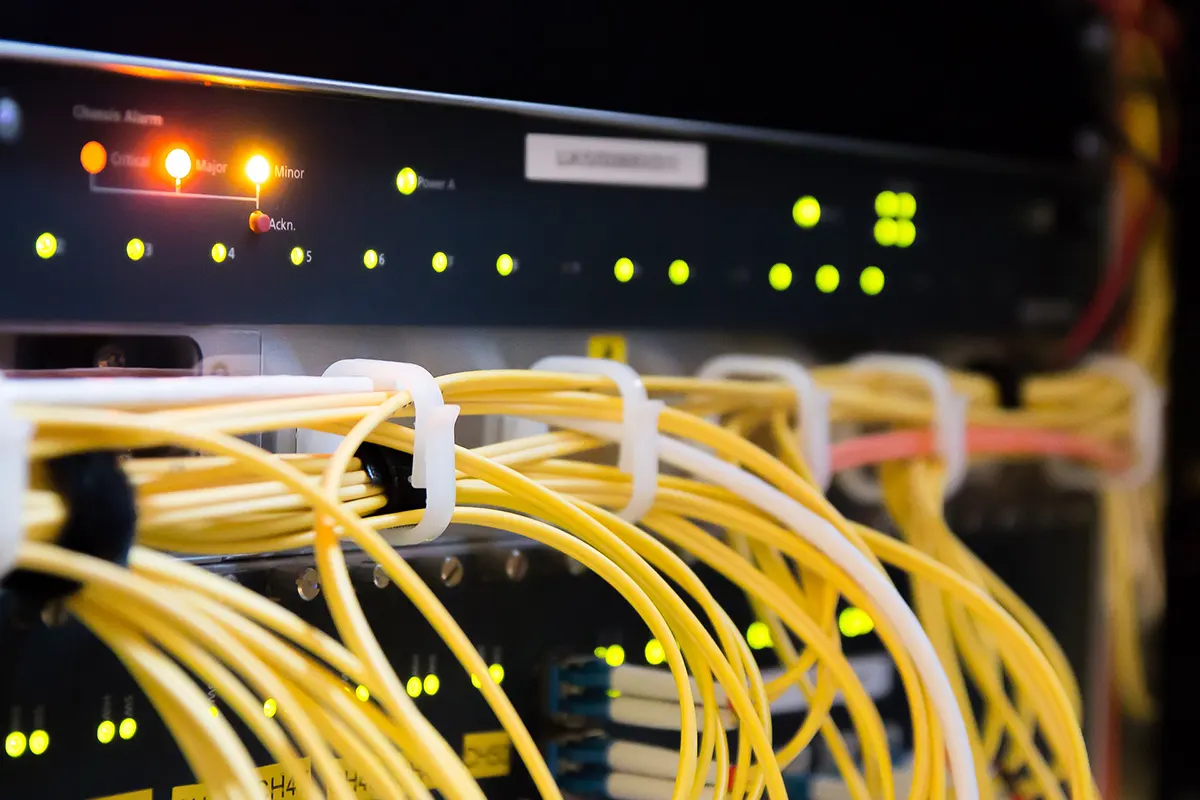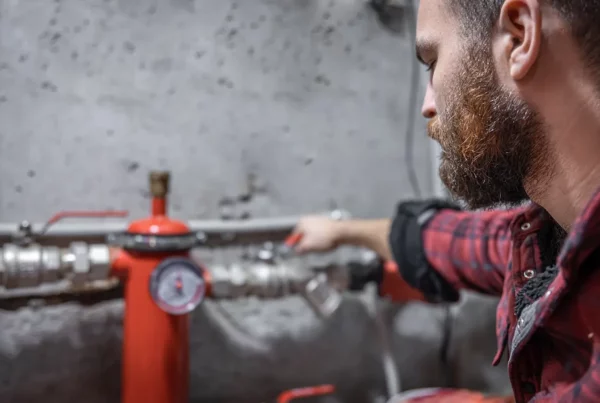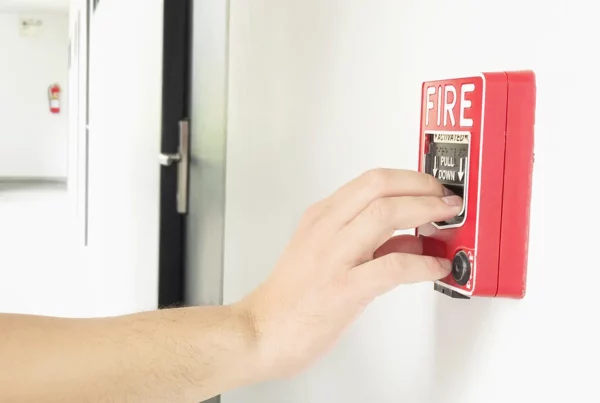
Whether you’re a business owner or administrator, it’s vital to be well-informed about the process of installing network cables. Here, we will teach you everything you need about network cabling installation, discuss the basics, and provide tips for choosing the right cables and equipment for your needs. So this guide is for you whether you’re just getting started or looking to improve your existing network cabling installation!
What is Network Cabling Installation?
This is the process of installing the necessary infrastructure for network cable systems. It includes the installation of cables, data jacks, patch panels, and equipment racks. It aims to provide a physical connection between devices for communication.
It is important to note that network cabling installation is not the same as network wiring. Network wiring refers to connecting devices to a central system. Network cabling installation, on the other hand, is the process of connecting devices to each other.
If you’re planning on installing a network cabling system, here are some factors to consider:
1) The type of cabling required. Several types of cables can be used, so it’s essential to choose the right one for your needs.
2) The length of the cable runs. This will determine the amount of signal loss that occurs.
3) The number of network devices that will be connected. The more connected devices, the greater the potential for congestion.
4) The type of network traffic that will be generated. Different types of network traffic require different types of cabling.
5) The environment in which the cabling will be installed. Different settings have different levels of electromagnetic interference (EMI).
Types of Network Cabling
Coaxial Cable
This cable uses a single copper core surrounded by an insulating material and another outer conductor typically made of braided copper wire or foil.
It is typically used for high-speed data transmissions, such as Ethernet or digital video. The cable’s copper core provides a direct connection between devices, and the surrounding insulating material helps to protect against interference.
It is used in various applications, including computer networks, television, and radio.
There are two main types of coaxial cable:
• RG-59: It has a copper core surrounded by an insulating material and a braided outer conductor. This type is commonly used for television and radio applications.
• RG-11: This type is typically used for high-speed data transmission, such as Ethernet. It has a copper core surrounded by an insulating material and a foil outer conductor.
Fiber Optic Cable
This cable uses optical fibers to transmit data. Optical fibers are thin strands of glass or plastic that transmit light. It is typically used for long-distance data transmissions, such as between cities or countries.
It is a popular choice for network cabling because it can transmit data at very high speeds with little signal loss. It is also much thinner and lighter than traditional copper cable, making it easier to install and less expensive to maintain.
Twisted Pair Cable
This cable is made up of two insulated wires that twist around each other. Its main benefit is that it helps to cancel out any external noise that could interfere with the signal.
There are two types of twisted pair cable; shielded and unshielded. The former is more expensive but offers better protection against crosstalk and electromagnetic interference.
While twisted pair cable is the most popular type of network cabling, it is not always the best option. If you are working with an extensive network or one that needs to be able to handle a lot of data, then you might want to consider using fiber optic cable instead.
Home vs. Office
If you’re installing network cabling in a home, the process will be different than installing it in an office. In a home, you’ll likely be working with pre-existing wiring, so you’ll need to be careful not to damage any existing electrical lines. You’ll also need to not drill through walls containing plumbing or gas lines.
In an office, on the other hand, you’ll likely have more freedom to run new lines and install new outlets. The process will also be more complex, as you’ll need to consider the office’s network layout and ensure that all cables are run in a way that won’t cause any interference.
DIY versus Hiring a Professional
Certain network cabling installation jobs are simple enough to do yourself. If you’re comfortable working with tools and your network is small, you may be able to get away with a DIY installation. However, it would be best to leave such jobs to professionals.
Why Hire Professionals?
1) They have the experience and expertise to finish the job quickly and efficiently.
2) They have the right tools for the job, meaning they can get it done right the first time and meet all industry standards.
3) They can troubleshoot any problems that may arise during the installation process.
4) They can also provide you with a warranty on their work, so you can be sure that your investment is protected.
Downsides of DIY
1) Susceptibility to hazards. As network cabling is often installed in tight, hard-to-reach places, it can be easy to injure yourself if you’re not careful.
2) Liability issues. You could be held liable if something goes wrong with your system.
3) Cost. While hiring a professional may cost more upfront, it will likely save you money in the long run.
Why Choose Us?
We have been in the industry for over 20 years. We’ve worked with all different networks, from small homes to large corporate ones, and we know how to install quickly and efficiently.
We also offer several other services, including network design, maintenance, and troubleshooting. We’re your one-stop shop for all your needs, and we’re always available to answer any questions.
If you’re looking for the best network cabling installation in Caldwell, NJ, look no further than Nextgen Electric. Contact us today to get started!
FAQ
What steps are involved in network cabling installation?
1) Planning and design. This is where you’ll figure out what cables you need, how much cable you’ll need, and where all the cables will go.
2) Installation. This can be a big job if you’re doing an extensive network, but taking your time and doing it right is essential.
3) Testing. This involves testing the system to ensure everything is working correctly. It is essential because it can help you identify problems before they become significant.
4) Maintenance. Once your system is up and running, you’ll need regular maintenance to keep it in good condition. This includes checking for loose cables, regularly testing the network, and ensuring all the equipment is in good working order.
What is communication wiring?
Communication wiring is the connection of cables and other components that connect devices and enable them to communicate. This can include everything from ethernet cables to fiber optic cables, and choosing the right type of wiring for your needs is essential.
How much does it cost to install a network cable?
The cost can vary depending on several factors, including the network size, the type of cable you choose, and the complexity of the installation. Generally speaking. However, you can expect to pay between $50 and $100 per cable run.
If you’re looking for a more accurate estimate, it’s best to contact and consult professionals. We’ll be able to give you a better idea of the cost based on your specific needs.
What is structured cabling in networking?
This is the cabling that is designed to be highly organized and efficient. It typically includes labeled cables, color-coded cables, and neatly arranged cable runs. It can be more expensive than other types of network cabling, but it can also be much easier to manage and troubleshoot.









